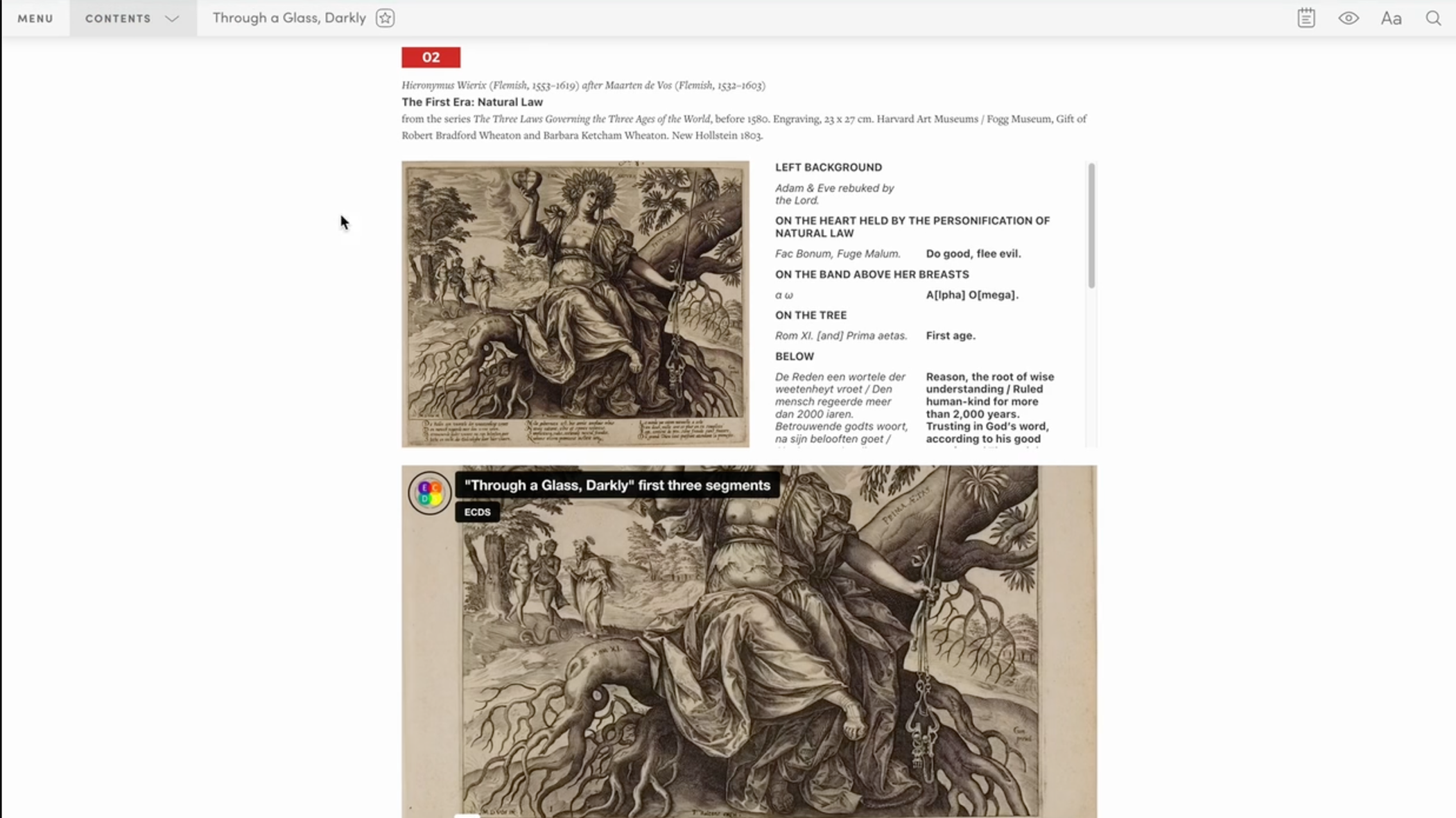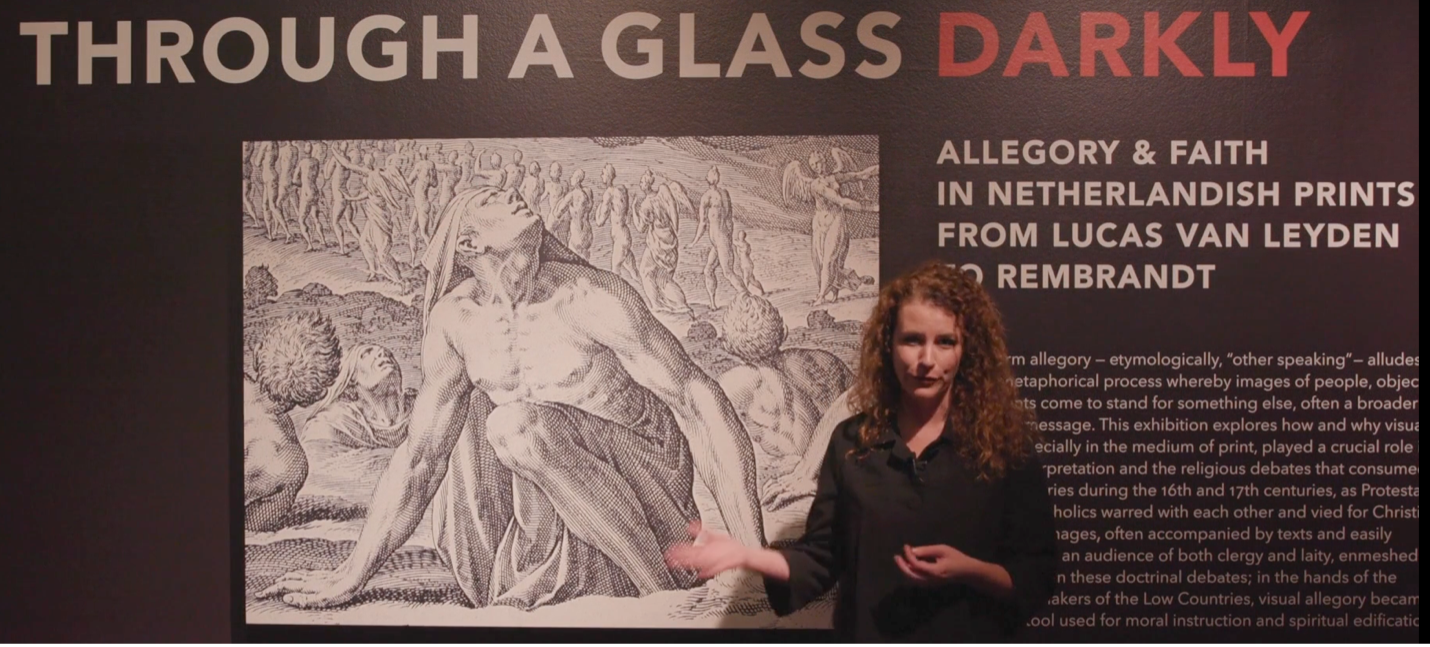A new video documents the making of an enhanced digital edition of the exhibition catalog for Through a Glass, Darkly: Allegory and Faith in Netherlandish Prints from Lucas van Leyden to Rembrandt. From the perspectives of the curator/catalog co-author, project manager, copyeditor, and software engineer/visual designer, this video shows the steps in creating an open-access multi-media publication with embedded commentary and deep zoom features using the Manifold online platform.
The eighteen-minute video (https://vimeo.com/904196643) takes viewers through the process of publishing the online catalog for an exhibition of some ninety rare 16th and 17th century engravings and etchings that explore the centrality of visual allegory to religious culture in the Low Countries. The Manifold edition draws upon the permanent collections of Emory’s Rose Library and Michael C. Carlos Museum, as well as materials loaned from the Metropolitan Museum of Art, the New York Public Library, and other institutions. Interface designer Yang Li guides viewers through the features of the online catalog, including extreme closeup interactivity, which enables high-resolution viewing of the exhibition’s prints and engravings. “You can see details,” says Walter Melion, Candler Professor of Art History and the catalog co-author, “that are hard to make out with the naked eye. With the digital edition, you can study small images closely and patiently as you think through what they mean.”
Developed by the University of Minnesota, Manifold is an easy-to-use platform. “Manifold was built to ingest digital files,” says Sarah McKee, coordinator of the Through a Glass, Darkly project who now works on publishing initiatives with the American Council of Learned Societies. “It works well with Microsoft Word documents or EPUB files.” Manifold features highlighting and annotating of the text and images, and also enables viewer comments in public or private modes. Mobile users have a similar streamlined viewing experience as desktop users. Nor do developers need to do much additional work to make the publication mobile responsive. Manifold has been adopted by numerous universities and presses for digital scholarly publishing. Its source code is freely available to foster collaboration between developers, designers, and editors.
In the Through a Glass, Darkly exhibition catalog, narrated embedded videos let viewers see the relationship between the online publication and the physical museum exhibition. “Catalogs are too expensive,” adds Melion, “and people who are often interested in them can’t afford them. The Manifold catalog can circulate widely for free.”
* * *
For other Emory-Manifold editions see https://manifold.ecds.emory.edu/

